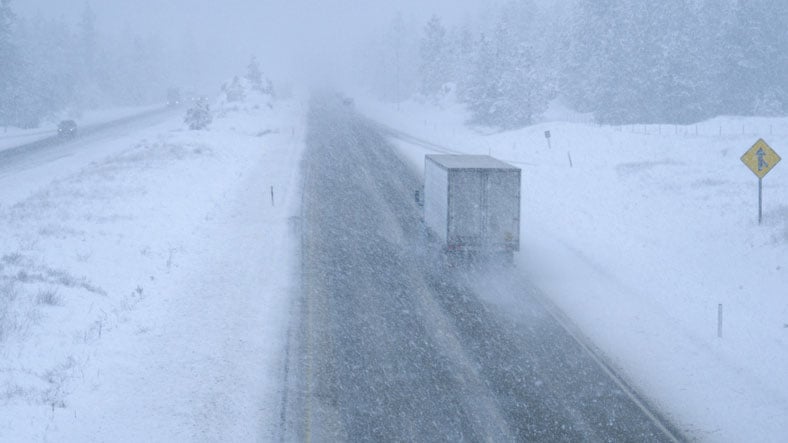Get a Firm Foothold in Scaffolding Safety
Our analysis of OSHA’s top 10 most frequently cited standards continues with a discussion of the "Scaffolding" safety standard.
Scaffolds of all types are a common work platform in construction and industrial sites. Used correctly, they are a powerful and important way to make operations a breeze—but without following the required regulations, risks to employee safety abound. It is crucial that managers learn about the guidelines that exist, to maintain compliance and protect their workers from harm.
OSHA’s Scaffolding safety standard was its fifth most violated regulation of 2022, with 2,285 citations reported being issued. This is nothing new: It was the fourth most violated in 2021 and 2020. The frequency of Scaffolding standard violations should worry operations or facilities managers—as fines for noncompliance can reach $15,625 per violation.
Scaffolding Causes Serious Hazards
About 65% of construction workers, or 2.3 million people, work frequently on scaffolds, according to the United States Bureau of Labor Statistics (BLS). Unfortunately, the volume of workers on scaffolds increases the chance of accident or injury.
The BLS estimates that 4,500 accidents and 60 deaths occur each year due to scaffolding, accounting for about 25% of annual fatal falls. These accidents are mostly due to scaffolding construction errors or a lack of fall protection. These are avoidable accidents—and the OSHA Scaffolding safety standard offers best practices to eliminate risks. Overall, compliance with OSHA safety standards can protect worker safety and eliminate the negatives associated with noncompliance, like hefty fines of up to $15,625 per violation or loss of brand image if workers are regularly being injured.
Clearly, adherence to OSHA safety standards yields many benefits. Below, we will explore a sample of these scaffolding guidelines and share tips to ease compliance.
Workplace Scaffolding Regulations
Falls are the primary workplace hazard of scaffolding—both falls from these platforms and objects that fall from them onto workers below. Knowledge acquisition is a crucial first step to reducing the likelihood of either of these events. Below, we outline some of the regulations you should know to make progress toward scaffolding compliance.
- Capacity (standard 1926.451(a)):
“… each scaffold and scaffold component shall be capable of supporting, without failure, its own weight and at least 4 times the maximum intended load applied or transmitted to it.”
Understanding the load any given scaffold can support will help prevent accidents as it lessens the risk of overloading the scaffolding system. Exceptions to the main rule above include when suspension or counterweights are used. Stall load of scaffolds, the load in which a motor-powered scaffold system will fail, must be at least three times the scaffold’s rated load.
- Scaffold design and construction (standard 1926.451(a)(6)-1926.451(e)(9)(iv)):
OSHA regulates almost all aspects of scaffold design and construction to ensure they are safe for use. This includes:
- Full planking/decking on platforms
- Guardrails
- Length and width of planking in different working conditions and environments
- Distance of scaffolding from the work to be performed
Supported scaffolds have their own set of regulations, including the need for relevant support systems and where they should be attached to the scaffold. Most notably, OSHA outlines what supports are acceptable—such as guys, ties, or braces—and which are unacceptable, like other unsupported objects. There are also regulations covering suspension scaffolding, and the appropriate materials to use in their construction. This includes where and when counterweights and tiebacks should be applied. - Use (standard 1926.451(f)):
Ensuring proper use of scaffolds, including via providing training, is a pivotal part of helping make sure workers don’t fall. Scaffolds should only be used for the load for which they are rated and must be repaired or replaced when damaged or otherwise made unsafe. Regular inspections are required.
Scaffolds should be placed away from external dangers like powerlines and they should not be used in snow, storms, high winds, or during times of excessive heat. These, among other guidelines, regulate scaffolding use.
- Fall protection (standard 1926.451(g) and standard (1926.451(h)):
Employees must employ fall protection throughout the entire cycle of scaffold use, from construction to dismantling. Personal fall arrest systems, such as lanyards or lifelines, are required for all working atop scaffolds. Toeboards and guardrails should be implemented at edges of scaffolding to prevent accidental falls. Screens and meshes can be used at any point, with varying weights they need to be able to withstand without failure depending on the guardrail set up.
To prevent injury from falling objects, workers in zones with scaffolding must wear hard hats at all times. Heavy objects should never be placed next to the edge of the scaffold platform’s surface. When properly employed, fall arrest systems described above, like screens, toeboards, guardrails, and debris nets, can also help prevent objects from falling over the side of the scaffold platform.
Scaffolding Regulations Compliance
Scaffolding regulations are complex and must be followed diligently. Managers who do not understand the guidelines will almost certainly become noncompliant. On the other hand, those that actively work toward understanding and implementing the rules can rest easy knowing their employees are safe while using these crucial tools. To help ensure Scaffolding safety standard compliance, managers should:
- Properly train employees: The first step to safety is to train your employees in all relevant regulations, including construction and disassembly of the scaffolding. Help your people understand the reason that the regulations exist and the benefits of complying with them.
- Develop scaffolding safety rules: Ensure that, to the fullest degree possible, all scaffolding regulations are followed in the work areas under your supervision. Do not skimp on guardrails, toeboards, or other fall protection measures. Then, after every reasonable precaution has been put in place, develop a set of rules for your employees to follow. Rules should account for guidelines that are the most crucial—do not allow workers to enter areas with scaffolding when they aren’t wearing hard hats, require all who mount scaffolds to use lanyards or other fall protection measures, etc.
- Enforce the rules: Rules are meaningless if they are not enforced. There should be a well-known and aggressive disciplinary procedure for rule-breaking. Penalties should be well-defined and acknowledged by all employees. Finally, do not make exceptions for any rule breaker—severity will help prevent violations as well as protect your employees and facility.
- Encourage safety gap reporting: Mold your company culture such that reporting potential problems is rewarded. The more employees know you take their safety concerns seriously, the more they will work to make the workplace a safer place for everyone.
Following these steps and observing all relevant local regulations will ensure your scaffolding-related processes are safe and compliant. Overwhelmed by these regulations? Triumvirate Environmental offers consulting services to help ensure you maintain compliance—saving you money and keeping you safe. Contact us today.







